 The weather is idyllic — 72 degrees. The fairways are a lush green.
The weather is idyllic — 72 degrees. The fairways are a lush green.
By late afternoon, the winter sun splashes a rosy finish on your round against a background of purple mountains and desert vegetation. It is majestic, even if you didn’t break 100.
It’s inviting if you live here, and more so if you’ve paid thousands of dollars to escape driveway snow-shoveling duty.
Golf is big business in Maricopa, and as we enter February, we enter The Season.
- Tee times become a challenge to snag.
- The 2023 golf-club models from the major manufacturers are arriving at local pro shops this month.
- And if you’ve never been a golfer, you might be inspired to give it a try after watching the WM Phoenix Open in person or on TV.
Fueled by COVID-19 and social distancing, the game of golf was something people could do outside during the pandemic when they couldn’t do much else. It has reached heights of popularity not seen since a young Tiger Woods won The Masters in 1997.
According to Golf Digest and the National Golf Foundation, there were more than 597 million rounds played in the U.S. in 2021. A slight decline of 2% followed in 2022, but those numbers still are well above pre-pandemic levels, when it often was perceived as a dying sport.

For the last four years, both courses have experienced significant growth in the number of rounds played.
Players at The Duke teed it up for 60,179 rounds in 2022, up nearly 13% since 2019, when 53,285 rounds were played.
At Southern Dunes, 47,921 rounds were logged in 2022, an increase of 9,208 rounds from 2019. That’s an increase of 24%.
Nationally, the big year was 2021, when rounds increased 19%, according to the National Golf Foundation. Abnormally good weather throughout the country made it the best weather year for golf since 2012, when rounds played increased 8.7%.
While Maricopa’s numbers didn’t quite match those national spikes, statistics show in 2022, when national trends took a bit of a step back, Maricopa’s courses saw continued growth, affirming golf is an important part of the local and statewide economic landscape.
There are golfers in all 50 states, but Arizona is among the few where you can count on being able to play year-round.
This time of year in Arizona, and especially in Maricopa, is the busiest on the courses.
____________________
CORRECTION
In the February print edition of InMaricopa, Bryon Gribbons’ title was incorrect in the golf-package report. He is general manager of The Duke at Rancho El Dorado.
____________________
Bryon Gribbons has spent the last seven years as the general manager of The Duke at Rancho El Dorado. It’s his second stint at the par-72 course. He was previously there from 2009-11.
As the city has grown, so has activity at The Duke, he said.
“It has flooded the courses here in town,” Gribbons said. “Now, during the peak, we’re pretty much booked at 100% capacity. Back then (2009-11), we would be at 75% during peak season.”
Brady Wilson has been general manager at Ak-Chin Southern Dunes since 2012. Wilson said peak season began Jan. 9 and will continue through April 10. While the course at Southern Dunes is busy all day now, that will all change when the heat of the summer hits around May.
“People still want to come out and play,” Wilson said, “but they want to play between 6 a.m. and 10 a.m.”
Pricing
Both courses utilize dynamic pricing, meaning it will cost more to play during busier times than at slower times.
For Southern Dunes, fees during peak season are $159 to $179, and for the week of the WM Phoenix Open (Feb. 6-12), it’s closer to $300.
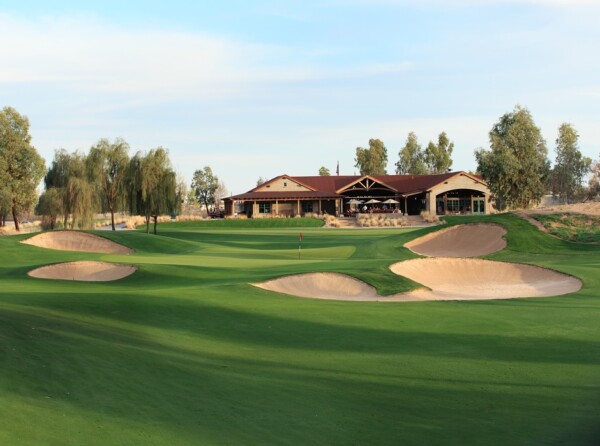
Gribbons said the top rate at The Duke is $85 during peak season, but it can fluctuate.
“If we’re crazy busy, that could be $105, or $107,” Gribbons said. “But if it’s slower, you could see that rate fall to $75.”
It gets a lot cheaper to play at both courses in the summer. At The Duke, green fees fall as low as $20 for 18 holes. At Southern Dunes, the cheapest summer rates are around $50.
Both courses have a driving range. At The Duke, you can purchase a small bucket of balls for $7, a medium bucket for $10 or a large bucket for $15.
The driving range is included in the green fee at Southern Dunes, but it comes with a caveat, as Wilson explained.
“Every golf course has a point in the afternoon where they call it twilight, or sundown,” Wilson said. “It’s the time of day where you don’t have enough daylight to play. We close the range at that point because anyone who comes out just wants to get onto the course and go play.”
Tee times
While both courses may appear to have next-day availability, those tee times often are limited to the afternoon. For example, on Jan. 12 the earliest tee time available the next day at Southern Dunes was at 2:30 p.m., which means a complete game would be a difficult task to complete. Wilson said the average round at Southern Dunes takes about four hours and 30 minutes hours and the course is dark by 6 p.m.
Gribbons said at The Duke, it’s best to book at least a week out to ensure you get a decent tee time. He added that a round at The Duke runs at least four hours and 15 minutes.
This time of year, the most-valued tee time is 9 a.m. To get it, you should try to book about two weeks out.
At Southern Dunes, it’s a good idea to book at least five days out.
THE DUKE FRONT 9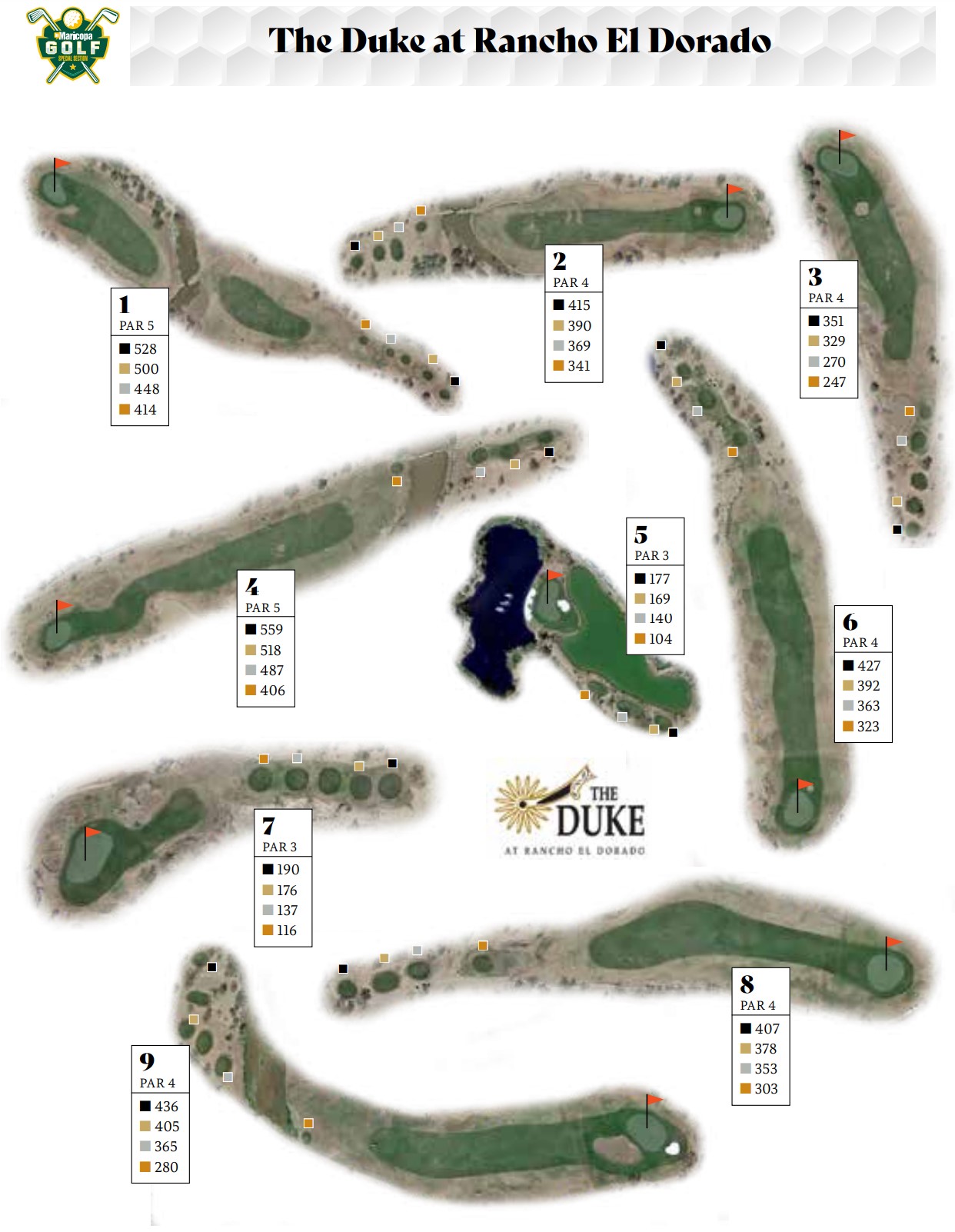
THE DUKE BACK 9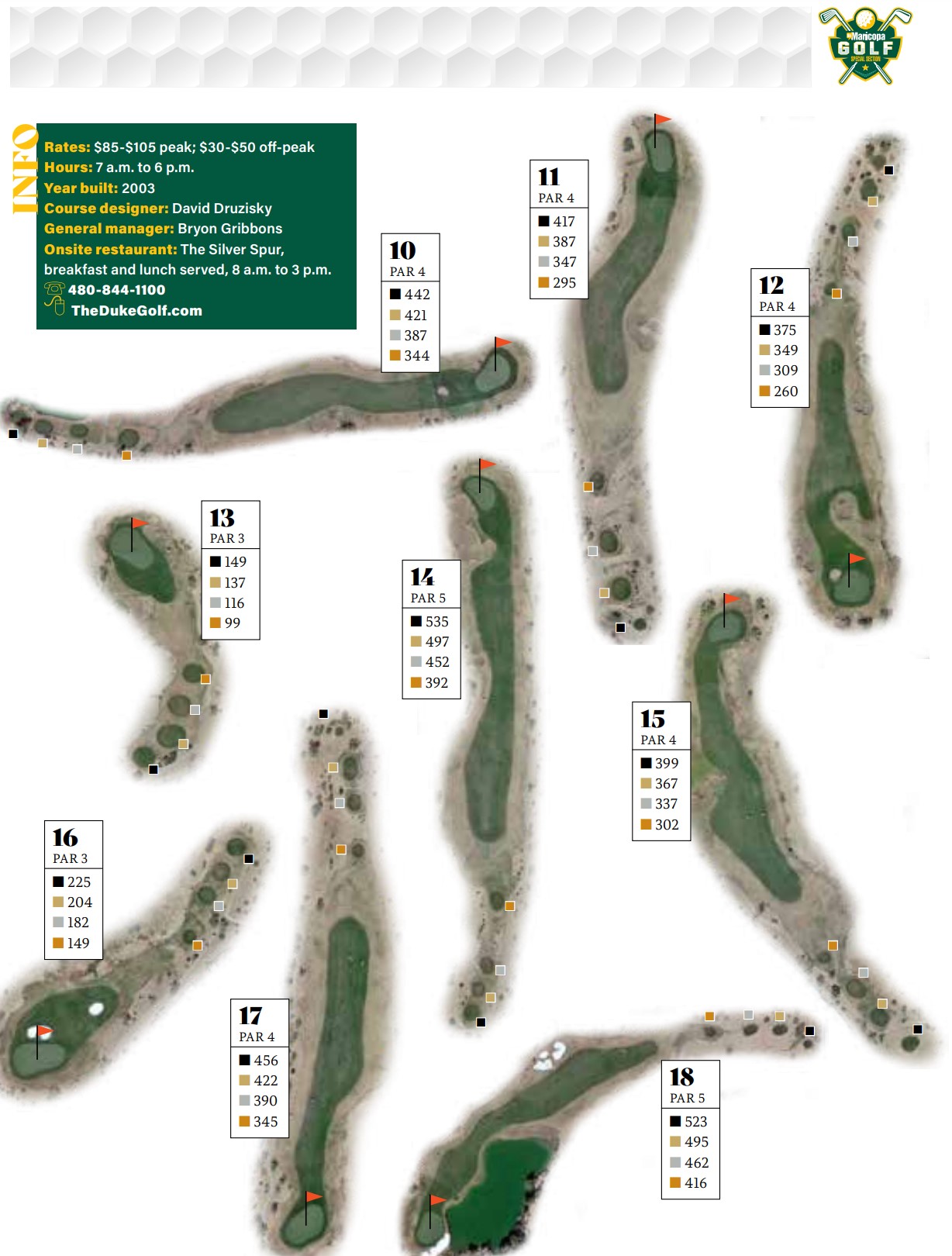
SOUTHERN DUNES FRONT 9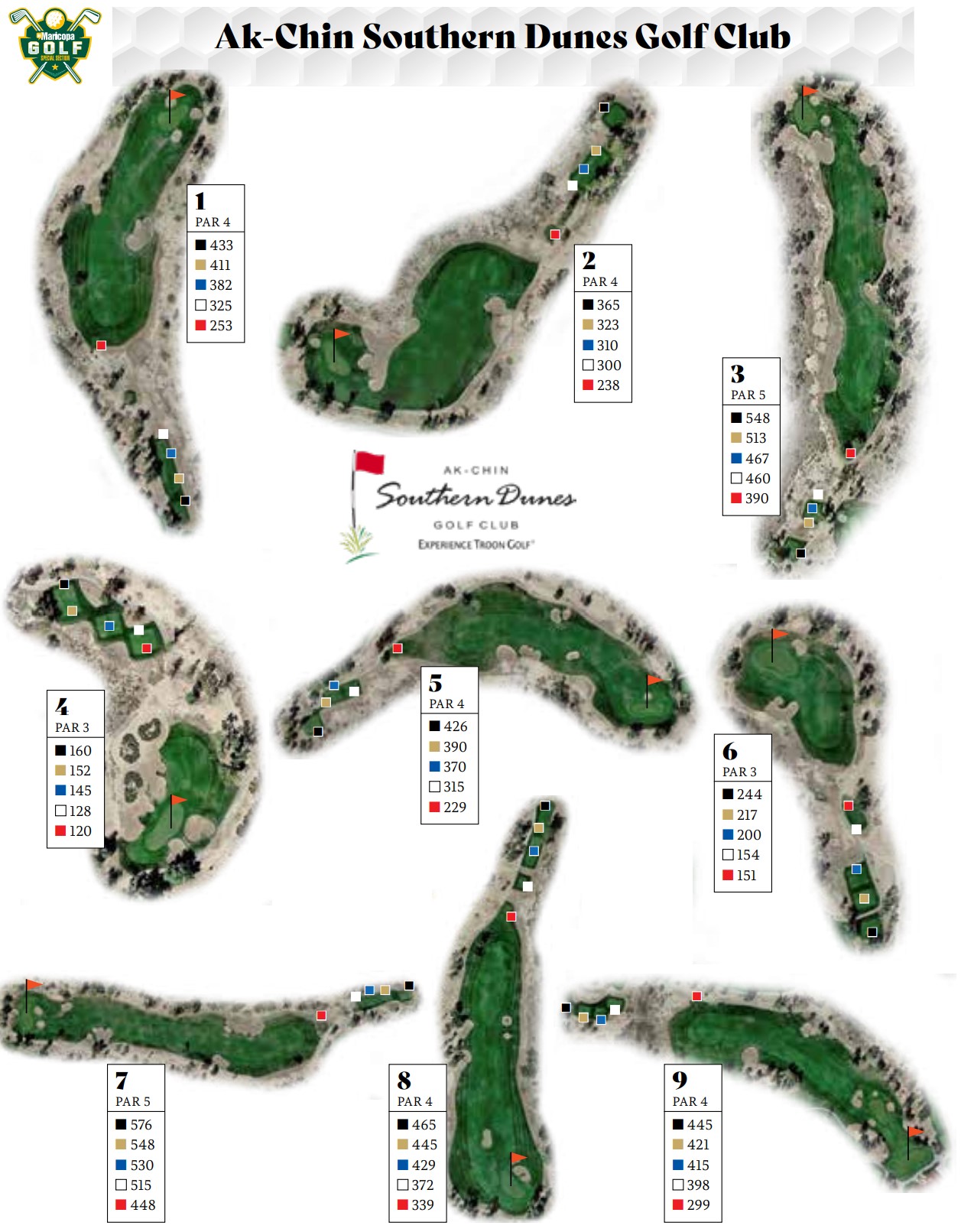
SOUTHERN DUNES BACK 9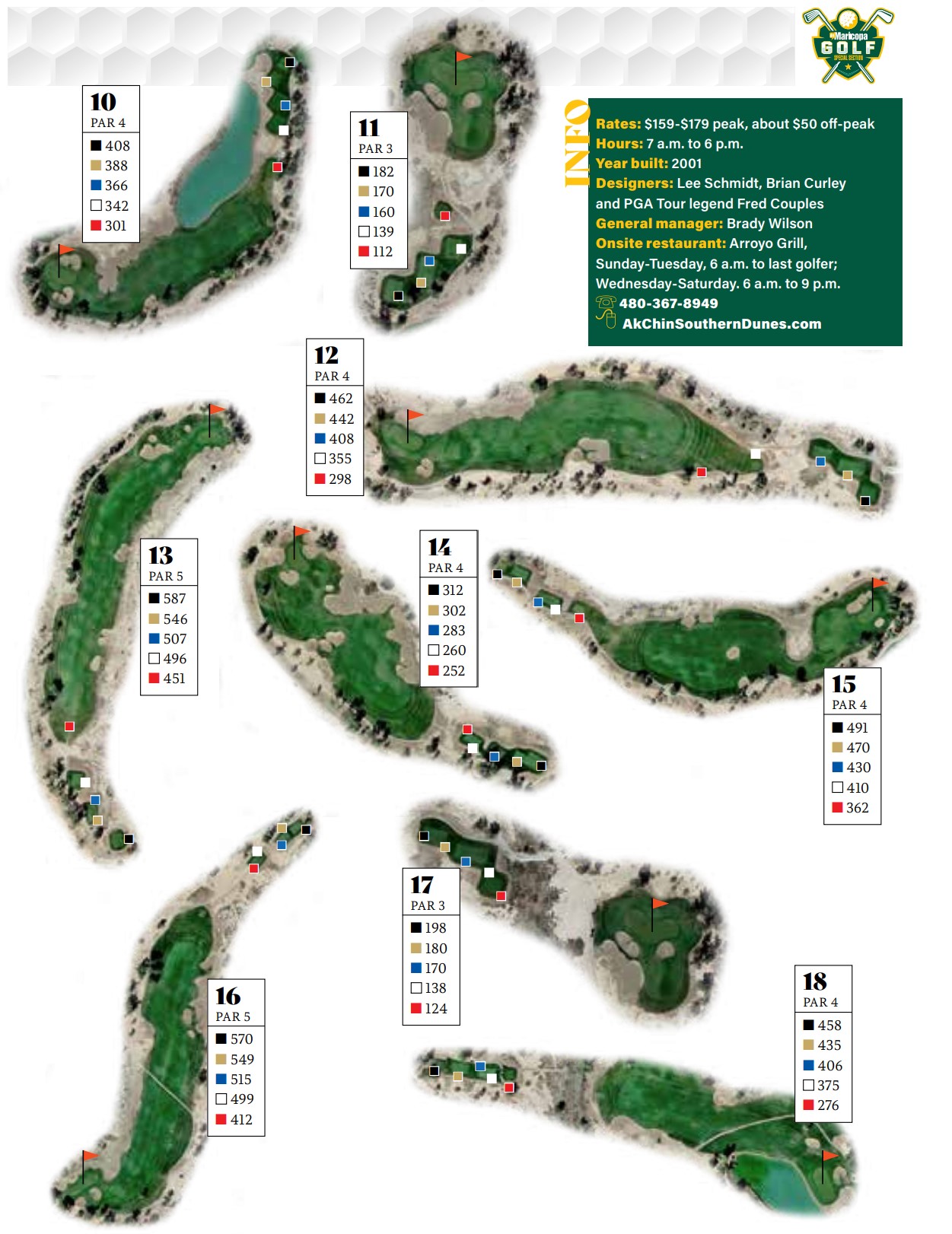
Course structure, history
Southern Dunes was built in 2001 and The Duke in 2003. The Duke is considered semi-private, as it has 100 members, a number Gribbons said isn’t likely to change.
“We have members, but we’re a public golf course,” Gribbons said. “We don’t have plans of adding any members. It’s a balancing act of trying to figure out how many members you can have plus how many public players you can have.

Southern Dunes also is public. The Ak-Chin Indian Community purchased the facility in 2010 and over the next three years transformed it from a private club to a daily-fee facility.
“I look at it like there’s two histories with this course,” Wilson said. “Before January of 2013 and after. There’s no men’s or women’s group that gets preferential treatment, it’s all very democratic. It’s first come, first serve. Everyone has the right to that 9 a.m. tee time on Saturday morning, it’s just who books it first.”
As for difficulty, the heavily-bunkered Southern Dunes has a higher rating. It’s often the site of championship tournaments, including the 2023 NIT college tournament in May. It will host a U.S. Open qualifier the same month.
“It’s a championship golf course,” Wilson said. “The course is built to be a challenge. There’s a lot of sand, a high slope rating. The golf course is hard.”
As Gribbons explained, The Duke is a little more forgiving.
“The layout is friendly toward players,” Gribbons said. “I wouldn’t say it’s easy, but it’s a moderate course, where all ages can play regardless of skill level.”
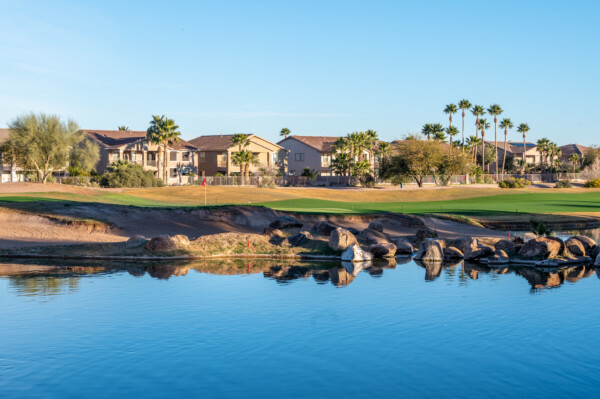
For Gribbons, No. 5 and No. 18 are the memorable holes at The Duke.
“Number 5 is our signature hole,” Gribbons said. “It’s a par- 3 and the greens are completely surrounded by water.”
The 18th hole is the toughest, according to Gribbons.
“It’s a par 5 with water all along the left side,” he said. “It’s kind of a high-risk, high-reward kind of hole. You know that if you hit a good drive, you can risk it and try to go for it in 2. But if you’re not careful, you’ll end up in the water.”
The Duke is also a residential golf course, which adds a community feel, Gribbons explained.
“It’s a great setting for a golf course, and we have a restaurant on site, too,” Gribbons said. “Anyone can come out and use our putting green or chipping arena for free if they bring their own balls.”

The design of Southern Dunes was a collaboration among PGA Tour legend Fred Couples and architects Lee Schmidt and Brian Curley. It’s the sixth course designed by the trio. The others include The Plantation and The Palms, near Palm Springs, Calif.; Southern Oaks Country Club in Houston; Talega in San Clemente, Calif., and The Crosby Estate in Rancho Santa Fe, Calif.
Southern Dunes sits on 320 acres, with mountain vistas. It is in the style of an Australian Sand Belt golf course. It once was part of the Ak-Chin Indian Community’s original May 1912 reservation before it was removed by presidential executive order later that year.
Prior to the Ak-Chin Community purchasing the course in 2010, three other groups had owned the course that initially was developed as a private club.
“To this day, the majority of our players come from the Phoenix metro area, whether it’s golfers from the Phoenix area or what I call the transient golfers visiting during the winter from other parts of the country,” Wilson said. “That’s where most of our play comes from.”
To attract those far-flung players, Wilson said the goal is to deliver a high-level experience.
“Everything we do is aimed at offering a quality golf experience, so when golfers leave here and have to drive back up to Phoenix on (SR) 347, they’re saying that it was worth it.”
Owning a home on a golf course
There are roughly 500 houses in Maricopa considered golf course homes. That represents about 2% of the total market. The question is whether that scarcity equates to higher demand.
Dayv Morgan, a Realtor who’s closed nearly $300 million in real estate deals in and around Maricopa, said while the value of golf course homes has waned in the past few years, it’s still there.
“I’d say the average appraiser is going to add about $20,000 onto the value of a home that’s on a golf course,” Morgan said.” “In the early 2010’s it was still about $20,000, however the sales prices then were about a third of what they are today. So, the value added as a percentage of the price is a lot less.”
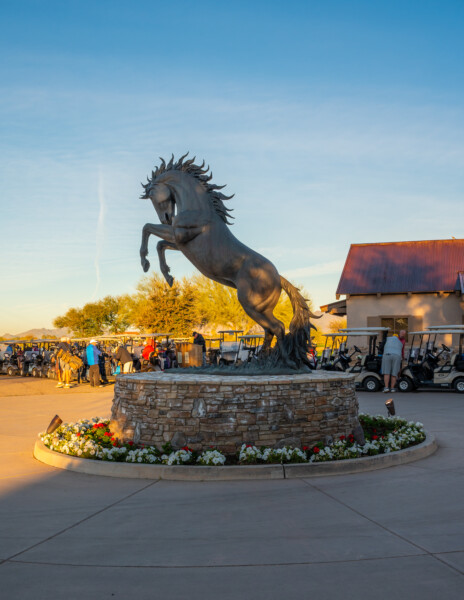
“It’s hard to get an exact number, but I’ve heard at one point, around 25% of the homes in Rancho El Dorado were owned by Canadians,” Morgan said. “From my own experience, I think that’s likely pretty accurate.”
With Canada’s population about one-tenth of the United States, those buyers were used to more wide-open spaces.
“They wanted bigger lots,” Morgan said of many Canadians. “But in Maricopa, the lot sizes are smaller, so the next best thing was to get a home on a golf course.”
The slight shift in the market was a result of a few factors, the biggest being COVID-19, which forced many Canadians to sell their homes in Maricopa due to travel restrictions and problems they encountered leaving or getting back into Canada.
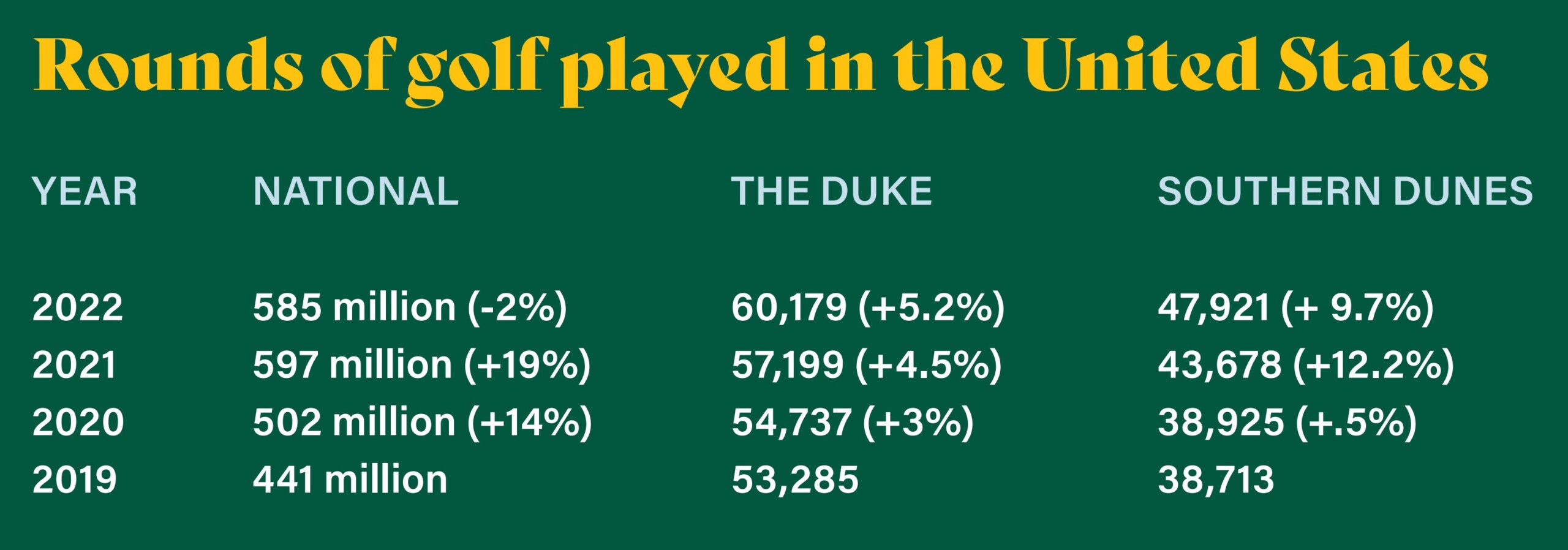
Sources: Golf Digest, The National Golf Foundation, Ak-Chin Southern Dunes, The Duke at Rancho El Dorado.

![Bryon Gribbons [Bryan Mordt]](https://www.inmaricopa.com/wp-content/uploads/2023/01/BCM_2977-scaled.jpg)




![Elena Trails releases home renderings An image of one of 56 elevation renderings submitted to Maricopa's planning department for the Elena Trails subdivison. The developer plans to construct 14 different floor plans, with four elevation styles per plan. [City of Maricopa]](https://www.inmaricopa.com/wp-content/uploads/2024/04/city-041724-elena-trails-rendering-218x150.jpg)

![Affordable apartments planned near ‘Restaurant Row’ A blue square highlights the area of the proposed affordable housing development and "Restaurant Row" sitting south of city hall and the Maricopa Police Department. Preliminary architectural drawings were not yet available. [City of Maricopa]](https://www.inmaricopa.com/wp-content/uploads/2024/04/041724-affordable-housing-project-restaurant-row-218x150.jpg)









